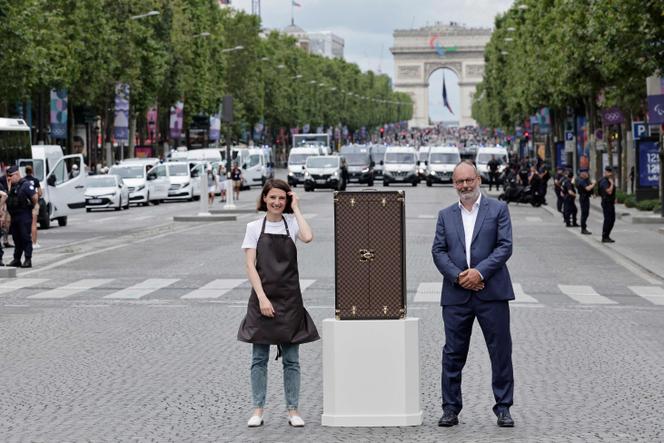


Monday is usually a day off at Marigny. But on Monday, May 27, the Parisian theater on the Champs-Elysées, 200 meters from the presidential palace, was packed to the rafters. At 6:30 pm, the curtain rose on a singular performance before a dressed-up crowd. On stage, four men − a president, an architect, a researcher and a politician − encircled a gray, heavy box. One of them, Marc-Antoine Jamet, president of the Champs-Elysées Committee, strolled around the stage for 40 minutes with a microphone headset before handing Emmanuel Grégoire, then deputy mayor of Paris in charge of urban planning, the box placed in front of him.
The box contained the 1,800 pages of a €5 million study entitled "Re-enchanting the Champs-Elysées" on the future of "the world's most beautiful avenue." It took five years to complete and involved three successive directors, 183 experts, 30 consultancy firms and 15 urban planners. A "360-degree study" summed up in 152 proposals, which the City of Paris was urged to examine closely.
"There are three authorities to whom we are listening: Paris City Hall, which we have no intention of replacing, the police prefecture and the ministry of culture," said Jamet, to defuse any possible controversy. Because why would the private sector be so interested in sidewalks, roadways and gardens, which in France fall under the responsibility of the state or the city? "There's no hidden agenda," he continued. Jamet is also the Socialist mayor of Val-de-Reuil in Normandy and general secretary of the luxury goods group LVMH, one of the avenue's biggest property owners. Is the goal simply to make the 300,000-visitor-a-day thoroughfare, an urban and commercial motorway neglected by Parisians, more "attractive"? The study "is ready to use; all we need is a new Baron Haussmann, and everything will go very quickly." Provided €250 million can be found.
It's an enormous project. One of the key proposals put forward by Philippe Chiambaretta, the architect who designed the project, is to reduce the number of cars on the avenue, Place de l'Etoile and Place de la Concorde. Others include the addition of kiosks in the gardens, children's play equipment, a sound system for the avenue, and − most crucially − the creation of a property owners association.
This last idea is inspired by Business Improvement Districts (BIDs) in the US and the UK, which are associations of private entities dedicated to their neighborhoods' development. New York's Time Square has its "Alliance," just as London's Leicester Square and Piccadilly Circus have BIDs. Why not the Champs-Elysées? The committee, which calls itself a "shopkeepers' association," thinks it has already won the first round: The idea is spreading and sparking debate. The goal isn't to supersede public authorities, but who can pay the bills when cities can't afford to?
You have 80.52% of this article left to read. The rest is for subscribers only.
